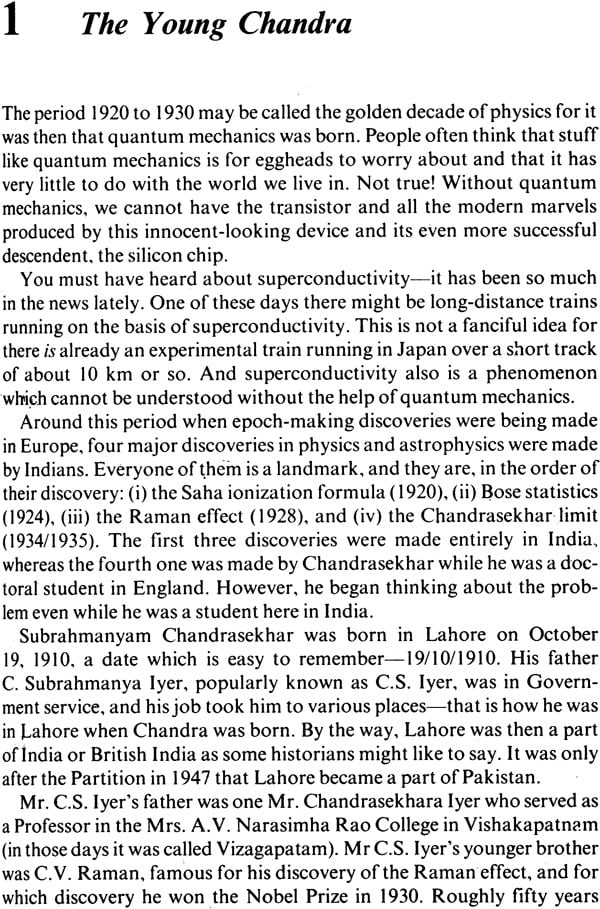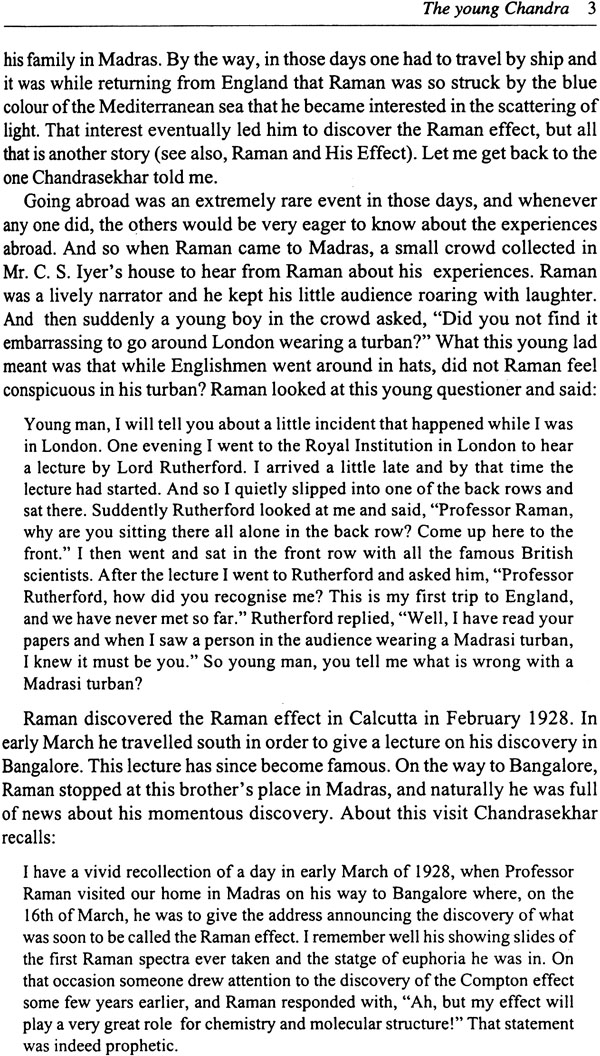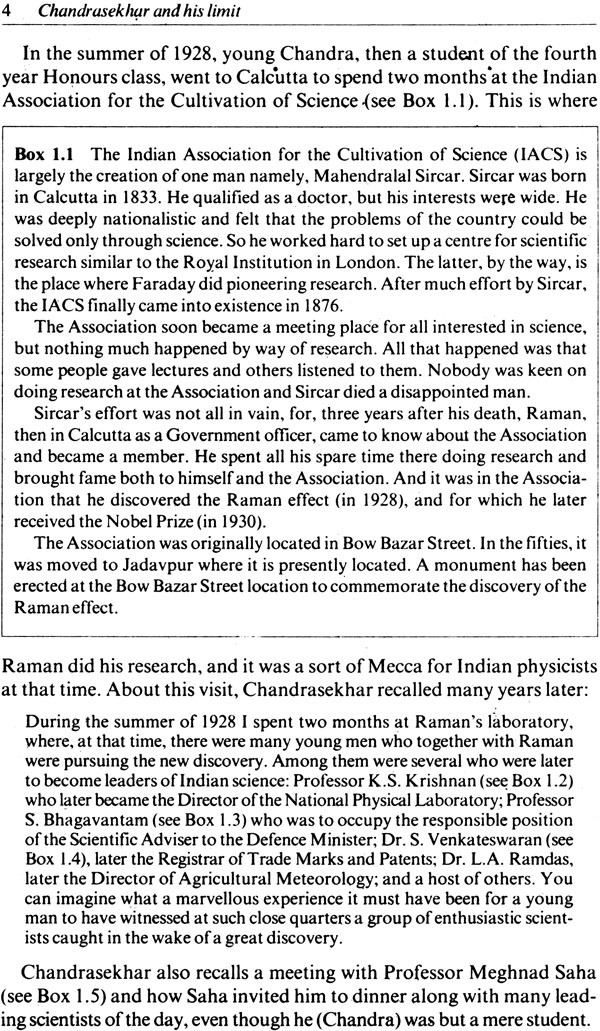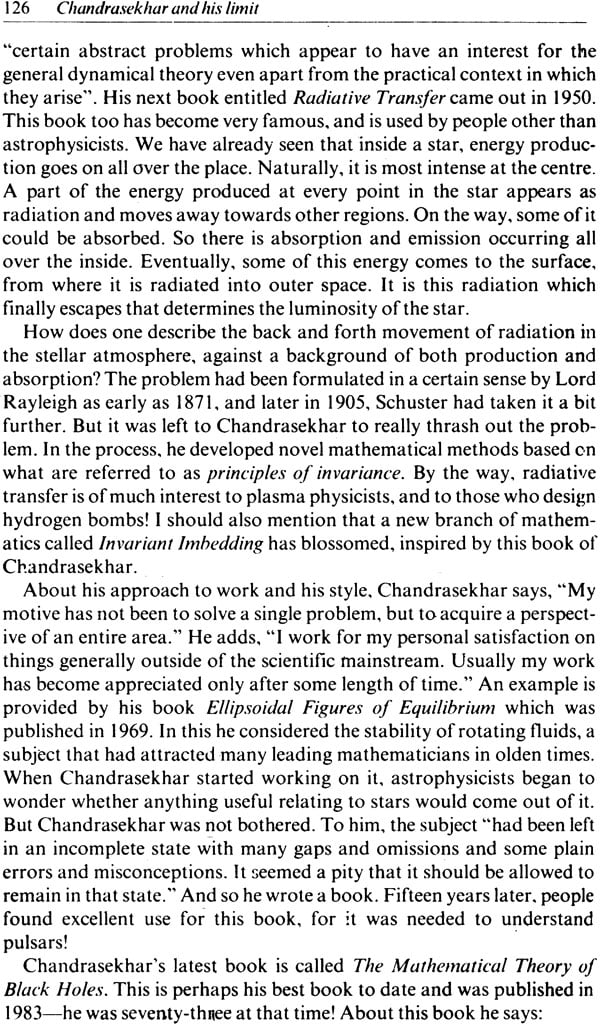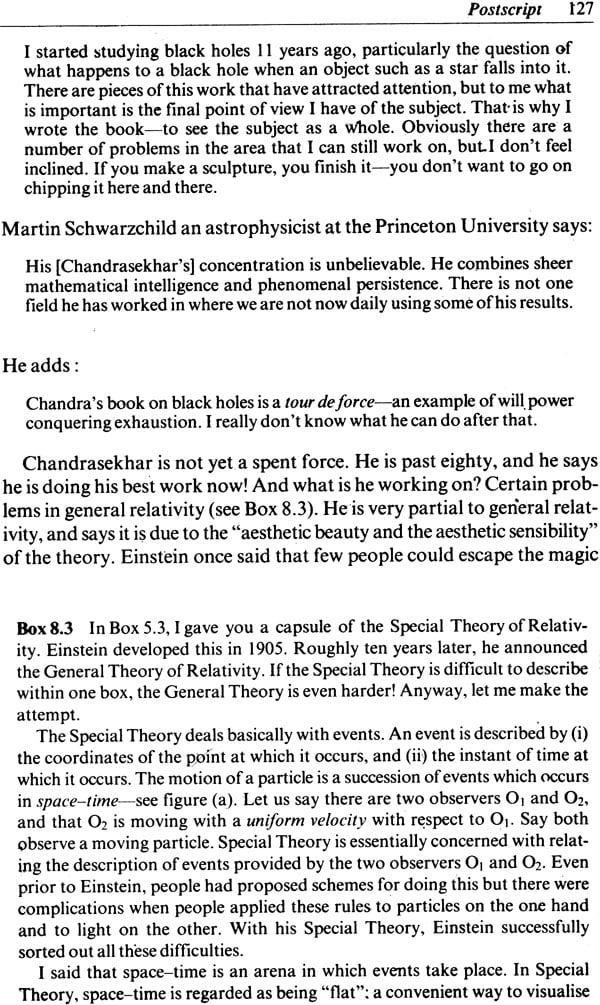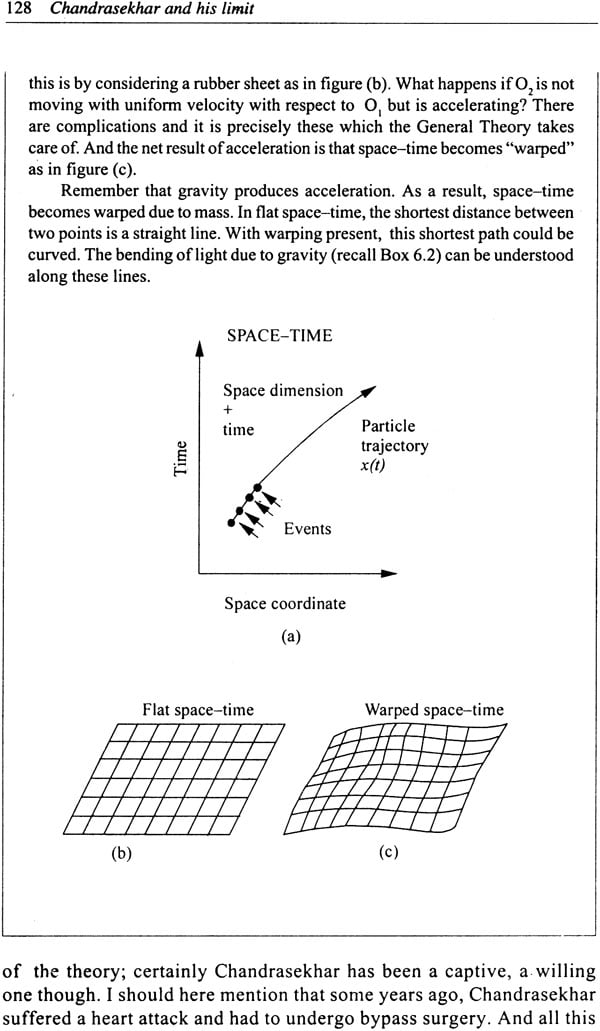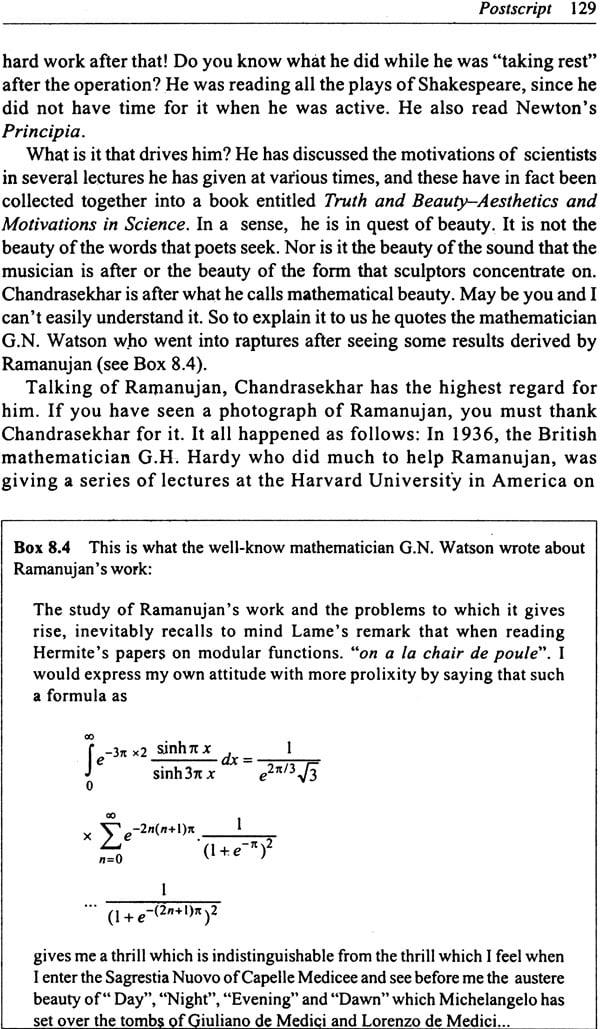
Chandrasekhar and His Limit
Book Specification
| Item Code: | NAH331 |
| Author: | G. Venkataraman |
| Publisher: | Universities Press Pvt. Ltd. |
| Language: | English |
| Edition: | 2012 |
| ISBN: | 9788173710353 |
| Pages: | 148 |
| Cover: | Paperback |
| Other Details | 8.5 inch x 5.5 inch |
| Weight | 180 gm |
Book Description
Preface
To the adult reader
This book and others in this series written by me are inspired by the memory of my son Suresh who left this world soon after completing school. Suresh and I often used to discuss physics, It was then that I introduced him to the celebrated Feynman Lectures.
Hans Bethe has described Feynman as the most original scientist of this century. To that perhaps may be added the statement that Feynman was also the most scintillating teacher of physics in this century.
The Feynman Lectures are great but they are at the textbook level and meant for serious reading. It seemed to me that there was scope for small books on diverse topics in physics which would stimulate interest, making at least some of the young students take up later a serious study of physics and reach for the Feynman as well as the Landau classics.
Small books inevitably remind me of Gamow’s famous volumes. They were wonderful, and stimulated me to no small extent. Times have changed, physics has grown and we clearly need other books, though written in the same spirit.
In attempting these volumes, I have chosen a style of my own. I have come across many books on popular science where elaborate sentences often tend to obscure the scientific essence. I have therefore opted for simple English, and I don’t make any apologies for it. If a simple style was good enough for the great Enrico Fermi, it is also good enough for me. I have also employed at times a chatty style. This is deliberate. Feynman uses this with consummate skill, and I have decided to follow in his footsteps (whether I have succeeded or not, is for readers to say). This book is meant to be read for fun and excitement. It is a book you can even lie down in bed and read. Without going to sleep I hope!
Naturally I have some basic objectives, the most important of which is to stimulate the curiosity of the reader. Here and there the reader may fail to grasp some details, and in fact I have deliberately pitched things a bit high on occasions. But if the reader is able to experience at least in some small measure the excitement of science, then my purpose would have been achieved. Apart from excitement, I have also tried to convey that although we might draw boundaries and try to compartmentalise Nature into different subjects, she herself knows no such boundaries. So we can always start anywhere, take a random walk and catch a good glimpse of Nature’s glory. Where she is concerned, all topics are ‘fashionable’. There is today an unnecessary polarization of the young towards subjects that are supposed to be fashionable. To my mind this -is unhealthy, and 1 have tried to counter it.
This series is essentially meant for the curious. With humility, 1 would like to regard it as some sort of a ‘Junior Feynman Series’, if one might call it that. With much love, and sadness, it is dedicated to the memory of Suresh who inspired it.
To the young reader
This book is about a very famous discovery made by a very famous man. Of course, when he actually made this very, very important discovery, he was not so famous. He was quite young actually, and, what is more important, he had to struggle a lot-I really mean a lot-to establish his discovery. It is a heart-warming and a very inspiring story. His name is Subrahmanyam Chandrasekhar, and it is no exaggeration to say that he is one of the most distinguished mathematical physicists this century has produced.
In a long and remarkable career, Chandrasekhar has done many outstanding things but in this book 1 shall concentrate mostly on one of them, namely, the discovery of the Chandrasekhar limit. As long as there are stars, and as long as there are people to talk about stars, the Chandrasekhar limit will not be forgotten!
Acknowledgements
I would like to .express my gratitude to Professors V. Balakrishnan and N. Mukunda, and to Dr. M.V. Atre for a careful scrutiny of the manuscript and for making many valuable suggestions. Mr. A. Ratnakar and Mr. J.D. Vincent offered much assistance in collecting source material. As always, Mrs. Naga Nirmala rendered invaluable help with the preparation of the manuscript. The editorial assistance and friendly cooperation received from Universities Press is also thankfully acknowledged.
Contents
| Preface | vii |
| The young Chandra | 1 |
| The birth and death of a star | 11 |
| Stellar physics-a first look | 33 |
| Polytropic analysis and the H-R diagram | 55 |
| Quantum effects | 61 |
| All about white dwarfs | 86 |
| Beyond the limit | 110 |
| Postscript | 123 |
| Suggestions for further reading | 135 |
| Index | 137 |
